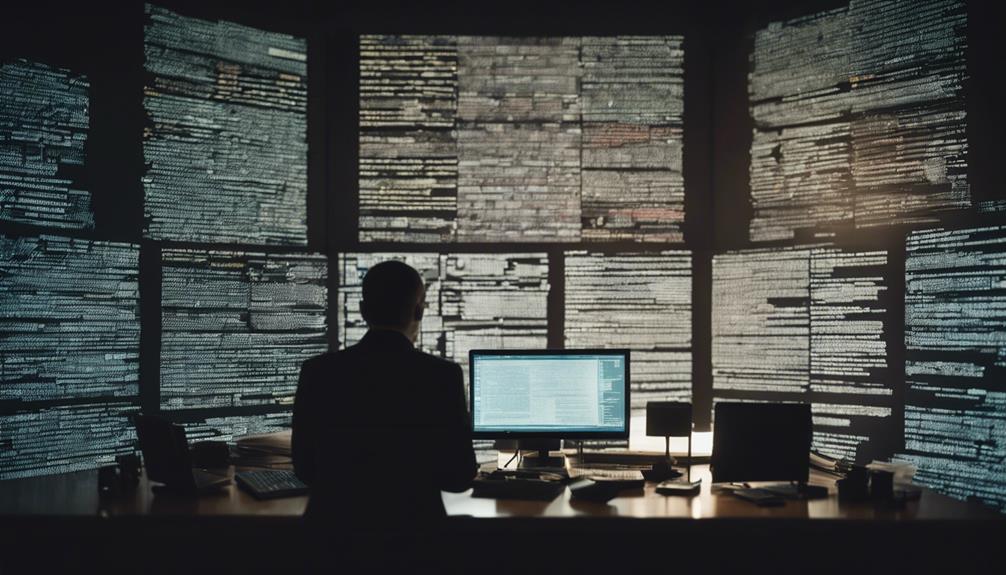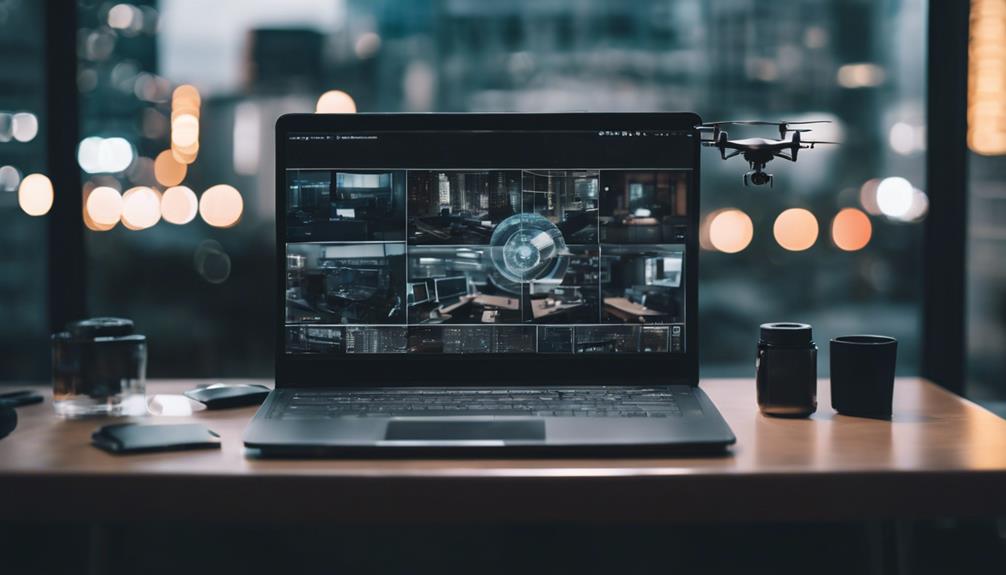
In the realm of modern technology, the Raspberry Pi has emerged as a powerful tool for DIY enthusiasts and innovators alike. Its compact size, affordability, and versatility make it an appealing choice for a variety of projects. One of the most intriguing applications is the creation of a Raspberry Pi spy camera, which can serve as a discreet surveillance solution for both personal and professional use. Whether you’re monitoring your home, keeping an eye on pets, or conducting research in a unique way, the Raspberry Pi spy camera opens up a world of possibilities.
The ability to customize and adapt a Raspberry Pi camera to your specific needs not only taps into your creativity but also offers a cost-effective alternative to traditional surveillance systems. This article explores the essential components, setup process, features, and various use cases for a Raspberry Pi spy camera, while also addressing privacy concerns and the supportive community surrounding this technology.
Discover the Versatility of a Raspberry Pi Spy Camera
The Raspberry Pi spy camera is not just a simple recording device; it embodies a wealth of versatility that appeals to tech enthusiasts and professionals. With the capability to integrate various software and hardware components, users can tailor their camera setups according to specific needs. From real-time streaming to advanced image processing, the possibilities are practically limitless. The compact size of the Raspberry Pi allows for easy concealment, making it an ideal candidate for discreet surveillance.
Moreover, the Raspberry Pi ecosystem supports a plethora of add-ons and modules, including motion sensors, GPS units, and additional cameras. This adaptability means that your spy camera can evolve with your requirements, whether you want to enhance your security system or experiment with creative projects. The combination of affordability and flexibility positions the Raspberry Pi spy camera as a valuable tool for anyone interested in surveillance technology.
Essential Components for Building Your Spy Camera
To create a functioning Raspberry Pi spy camera, you’ll need a few essential components. At the core of the setup is the Raspberry Pi board itself, which serves as the processing unit. Depending on your needs, you can choose from various models, such as the Raspberry Pi 4, which offers improved performance and capabilities. Next, you’ll need a compatible camera module, such as the Raspberry Pi Camera Module V2, which provides high-definition video quality and can easily be attached to the board.
In addition to the core components, you may also require a power supply, microSD card for storage, and possibly some additional peripherals such as a Wi-Fi dongle for remote access and control. Optional accessories like a case or stand can enhance the functionality and aesthetics of your setup. Collecting these components will allow you to construct a reliable and efficient spy camera that meets your specific surveillance needs.
Step-by-Step Guide to Setting Up Your Raspberry Pi
Setting up your Raspberry Pi spy camera may seem daunting, but the process is quite straightforward when broken down into manageable steps. First, install the Raspberry Pi operating system onto your microSD card. You can use Raspberry Pi Imager or Balena Etcher for this purpose, making it easy to get started. Once the OS is installed, insert the microSD card into your Raspberry Pi, connect it to a monitor, keyboard, and mouse, and boot it up.
Next, you’ll need to enable the camera interface in the Raspberry Pi configuration settings. This can be accomplished through the terminal or the graphical interface. Once enabled, you can install any required libraries and software for video streaming or recording, such as the popular MotionEyeOS or Motion software. After configuring these settings, you can start experimenting with your camera and customizing it to suit your needs.
Key Features That Make Raspberry Pi Ideal for Surveillance
The Raspberry Pi stands out as an excellent choice for surveillance due to its compact design and extensive customization options. This small computer can easily be integrated into any environment without drawing attention to itself, allowing for discreet monitoring. Furthermore, its capability to connect to Wi-Fi means that you can access your camera remotely, providing real-time monitoring from anywhere in the world through a web browser or mobile app.
Another significant advantage of the Raspberry Pi for surveillance applications is the community support surrounding it. A vast online repository of forums, tutorials, and open-source software makes troubleshooting and enhancements easier for users at any level. This community-driven approach ensures that you can continually update and improve your spy camera setup, adapting it to new technologies and methods as they emerge.
Enhance Security with Motion Detection Capabilities
One of the most compelling features of a Raspberry Pi spy camera is its ability to incorporate motion detection capabilities. By using software like Motion, users can set their camera to start recording or send alerts whenever motion is detected in its field of view. This feature not only conserves storage space but also ensures that you capture essential events as they happen, providing a reliable surveillance solution.
Incorporating motion detection can also enhance your overall security strategy. You can configure your Raspberry Pi camera to send notifications to your smartphone or email when movement is detected, allowing you to respond swiftly to potential security breaches. This proactive approach to surveillance can help deter unwanted visitors and ensure the safety of your premises.
Tips for Optimizing Video Quality on Your Spy Camera
To achieve the best possible video quality with your Raspberry Pi spy camera, consider several key factors. First, ensure that your camera module is positioned correctly and has a clear line of sight to the area you wish to monitor. Proper lighting is crucial for high-quality footage; try to place your camera in a well-lit area or use infrared LEDs for nighttime surveillance to enhance visibility in low-light conditions.
Additionally, tweaking the settings of your camera software can significantly improve video quality. Adjusting the resolution, frame rate, and compression settings can help balance video clarity with storage space. Experimenting with these settings will allow you to find the optimal configuration that suits your monitoring needs, enhancing the effectiveness of your Raspberry Pi spy camera.
Exploring Different Use Cases for Raspberry Pi Cameras
The versatility of the Raspberry Pi spy camera lends itself to a wide array of use cases. Homeowners can use it to monitor their properties, keeping an eye on entry points or valuable assets. Pet owners might employ the camera to check in on their furry friends while they’re away, providing peace of mind and ensuring their pets are safe and happy.
Beyond personal use, businesses can utilize Raspberry Pi spy cameras for various security applications. Monitoring parking lots, retail stores, or warehouses can help deter theft and vandalism. Additionally, educational institutions can implement Raspberry Pi cameras for research purposes or even as part of interactive learning projects, allowing students to engage with technology hands-on.
Cost-Effective Alternatives to Traditional Surveillance Systems
Raspberry Pi spy cameras offer a budget-friendly alternative to traditional surveillance systems, which can often come with hefty price tags and complicated installation processes. By harnessing the power of the Raspberry Pi, users can create tailored surveillance solutions that fit their financial constraints. The initial investment in components is minimal compared to the cost of commercial camera systems, and the DIY aspect allows for complete customization.
Moreover, the ongoing costs associated with maintaining a traditional security system—such as subscription fees or expensive service contracts—are virtually eliminated with a Raspberry Pi spy camera. Once your system is set up, you can operate it independently and make adjustments as needed without incurring additional expenses. This economic advantage makes the Raspberry Pi spy camera a smart choice for individuals and small businesses alike.
Addressing Privacy Concerns with Raspberry Pi Spy Cameras
While the Raspberry Pi spy camera offers numerous benefits, it also raises essential privacy considerations. Owners must be aware of the legal implications of using a surveillance camera, particularly in public or shared spaces. It’s crucial to familiarize yourself with the laws governing surveillance in your area, as unauthorized recording can lead to legal repercussions.
Moreover, ethical considerations come into play when deploying a spy camera. It is advisable to inform individuals who may be recorded of the surveillance presence. By being transparent about your intentions and respecting others’ privacy, you can foster trust and avoid potential conflicts related to privacy invasion.
Join the Raspberry Pi Community for Ongoing Support
One of the most significant advantages of building a Raspberry Pi spy camera is the strong community support that exists around the platform. Numerous forums, online groups, and social media channels are dedicated to Raspberry Pi enthusiasts who share tips, tricks, and troubleshooting advice. Engaging with this community can provide invaluable insights and help you overcome challenges during your camera setup.
Additionally, the wealth of online resources and tutorials available makes it easy for beginners and advanced users alike to find guidance. Whether you’re looking for specific software recommendations or hardware modifications, the Raspberry Pi community is an excellent place to seek advice and inspiration for your spy camera project.
In summary, the Raspberry Pi spy camera represents a versatile, cost-effective solution for anyone seeking a DIY surveillance option. With the ability to customize features, integrate motion detection, and optimize video quality, this technology empowers users to create tailored monitoring systems that meet their specific needs. While addressing privacy concerns is essential, engaging with the supportive Raspberry Pi community can enhance your experience and ensure successful project implementation. The Raspberry Pi spy camera not only provides security but also invites creativity and innovation in the realm of surveillance technology.




